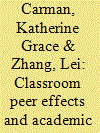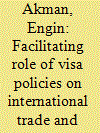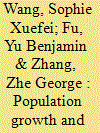| Srl | Item |
| 1 |
ID:
112716


|
|
|
|
|
| Publication |
2012.
|
| Summary/Abstract |
This paper estimates peer effects on student achievement using a panel data set from a middle school in China. Unique features of the organization of Chinese middle schools (Grades 7 to 9) and panel data allow us to overcome difficulties that have hindered the separation of peer effects from omitted individual factors due to self-selection and from common teacher effects and to identify peer effects at the classroom level. We estimate peer effects for Math, English, and Chinese test scores separately. In a linear-in-means model controlling for both individual and teacher-by-test fixed effects, peers are found to have a positive and significant effect on math test scores, a positive but insignificant effect on Chinese test scores, but no effect on English test scores. Importantly, in Math and Chinese students at the middle of the ability distribution tend to benefit from better peers, whereas students at the ends of the ability distribution do not, suggesting that policy makers who want to exploit positive peer effects face difficult tradeoffs in classroom and school assignment.
|
|
|
|
|
|
|
|
|
|
|
|
|
|
|
|
| 2 |
ID:
149429


|
|
|
|
|
| Summary/Abstract |
This study is focused on the direction and magnitude of visa policies on bilateral trade and foreign direct investment (FDI), both of which often necessitate in-person contacts. Visa restrictions hinder cross-border travel deterring potential visitors and producing an inimical effect on trade and FDI. Liberal visa policies facilitate business travels and encourage companies engaging in international trade. This article analyzes the impact of visa restrictions using gravity-type models for the period of 2000–14 on the exports and FDI of Turkey. A panel data fixed-effects model helps elucidate time-variant and country-idiosyncratic characteristics of visa policies. The estimations indicate that visa restrictions have a significant negative effect on both trade and FDI. Two-step cluster analysis is also utilized to segment countries depending on the visa-free travel their citizens enjoy employing the Henley & Partners Visa Restrictions Index. Results suggest that effects of visa restrictions are higher for countries having higher travel
|
|
|
|
|
|
|
|
|
|
|
|
|
|
|
|
| 3 |
ID:
143365


|
|
|
|
|
| Summary/Abstract |
This paper provides a specific application of the environmental Kuznets curve (EKC) in order to explain the effect of population growth on the environment. The main purpose is contributing to enhance the connection between theoretical and empirical analysis. We develop an overlapping generations (OLG) model that featured with an inverted U-shaped relationship between pollution emission and income and we examine the effect of population growth on this relationship. Simulations illustrate the model's predictions that positive population growth makes the EKC steeper and have higher peak, but it does not fundamentally change the pollution–income relationship. The econometric analysis finds evidence supporting our model's predictions using Chinese data at the province level.
|
|
|
|
|
|
|
|
|
|
|
|
|
|
|
|
| 4 |
ID:
117680


|
|
|
|
|
| Publication |
2013.
|
| Summary/Abstract |
After decades of intergovernmental transfers in India, studies to analyse the impacts of central government transfers on regional growth are inadequate. Even the limited studies that have been done have excluded the northeastern region (NER) from their analysis, except for the state of Assam. This article examines the impact of central government grants on economic growth in northeast India. In addition, we analyse if the growth impact of grants, if any, is uniform across states. Our analysis, based on official secondary data from eight northeastern states for the period 1991 to 2010, shows that per capita real central grant is positively associated with economic growth, but conditional on other variables being held constant. However, the effects of such grants are not uniform across the states. The growth effect of grants is estimated to be highest in Assam and lowest in Mizoram.
|
|
|
|
|
|
|
|
|
|
|
|
|
|
|
|